The black-capped chickadee Poecile atricapillus, is a common sight in the woods and at backyard feeders here throughout the state of Maine. Even though the black-capped chickadee is a non-migratory bird, I have found that they do leave the property and feeders for a short time during the late summer. These birds will leave around the end of July and make their way back to the property around the end of August or the beginning of September. We have been here for almost five years now and this happens every year. I have never observed this behavior from these birds anywhere else that I have lived. They could be seen or heard all year round. This pattern of behavior is most likely due to reasons, such as territory, breeding patterns, and the availability of food sources. I do miss their coming to the feeders for this short time during the summer, but I am very glad when they return. They are now back in the yard and have also been frequenting the feeders. I try not to take their absence personally, I suppose this is just how nature works. They are back and doing a wonderful job of cleaning me out of birdseed! It was getting rather quiet around here without their energetic presence. In this post, I would like to share some information about these cheerful songbirds.
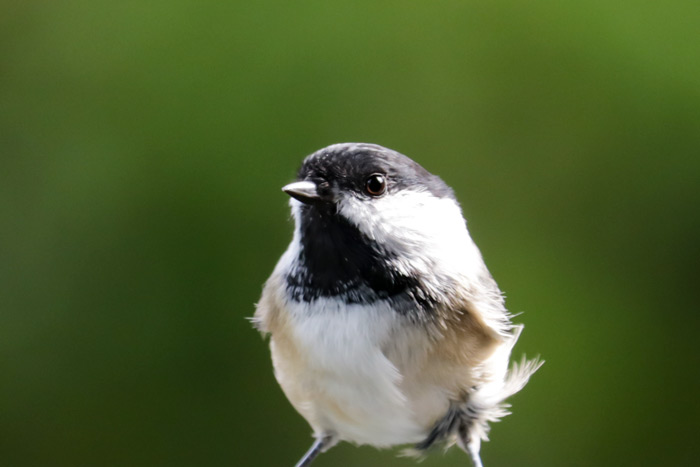
The black-capped chickadee was designated the official state bird of Maine in 1927. These birds are also the state bird of Massachusetts and the provincial bird of New Brunswick.
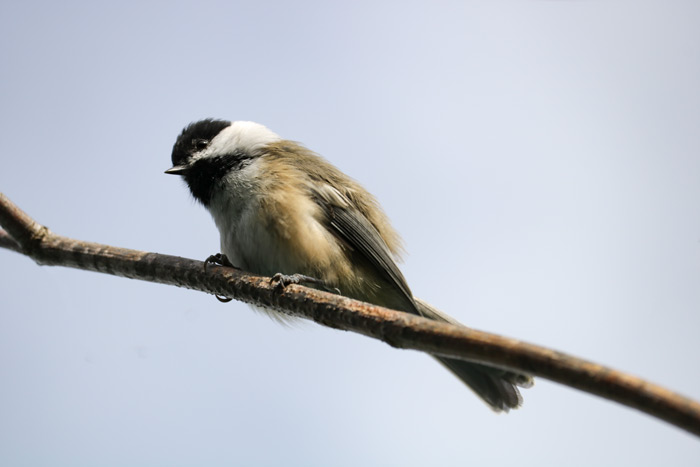
The black-capped chickadee is a passerine bird in the titmice family Paridae.
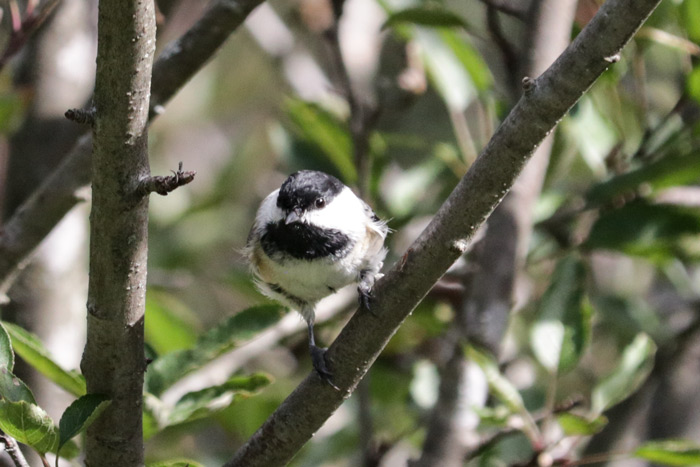
Black-capped chickadees are widespread in North America. They can be found from coast to coast, including most of Canada and the northern two-thirds of the United States.
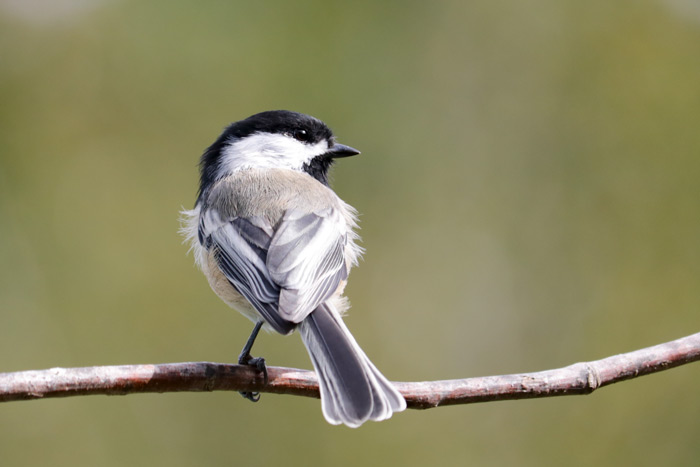
The black-capped chickadee is a small bird about 4 to 5 inches in length, with a short neck and a large head, giving it a distinctive spherical shape. This bird has a short beak, short rounded wings with a wingspan of 6 to 7 inches, and a long and narrow tail. The males and females look alike, but the males are slightly longer than the females.
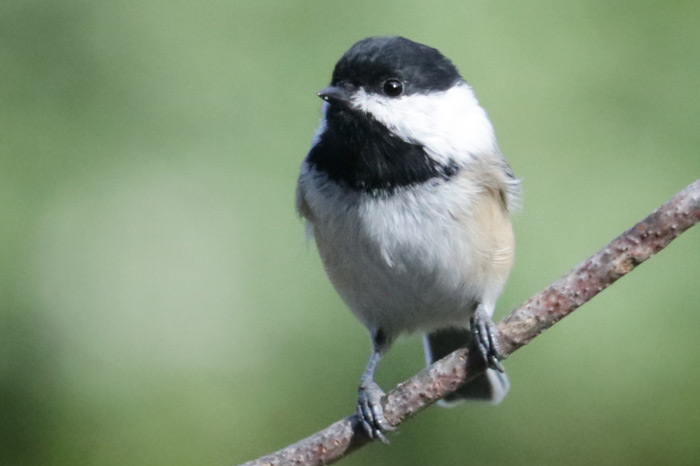
Black-capped chickadees have a black cap and bib, white cheeks, chest, and belly. The back is a soft gray, the wing feathers are gray-edged with white and the underparts are a soft and buff color on the sides. The cap extends beyond the eyes, making the eyes a bit tricky to see.
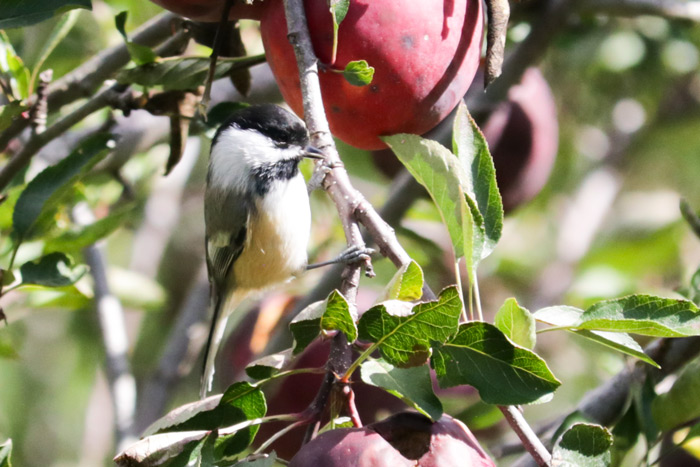
Black-capped chickadees consume insects, spiders, berries, suet, and seeds (especially sunflower seeds at feeders) that make up the majority of their diet. These birds will seldom remain at feeders and grab a seed to eat elsewhere. They will forage for food by hopping from twigs and branches and collecting food from a surface, often hanging upside down to reach the underside of branches to eat insects, larvae, caterpillars, and spiders finds or catches insects in mid-air. They sometimes store food under bark or lichen to recover later.
During the winter, vegetable matter, including seeds and fruit, makes up about half of their diet, but that decreases to 10-20% during warmer months. During the summer, caterpillars become an increasingly important part of their diet. They have also been seen scavenging fat from carrion.
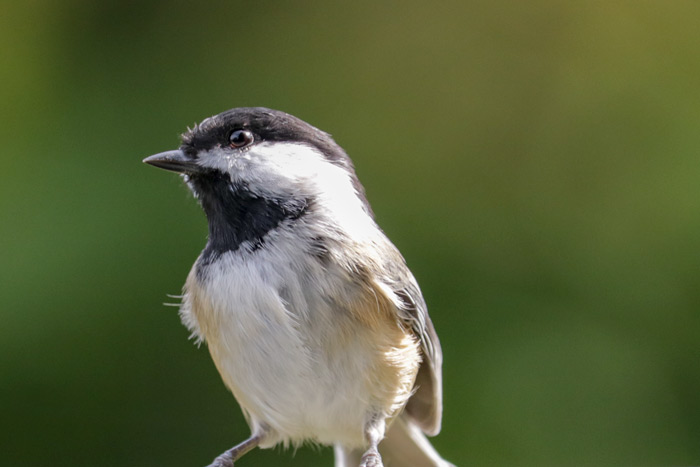
Black-capped chickadees can be found in a variety of habitats. These birds can be found in deciduous or mixed woodlands and coniferous forests. They are common in forest edges, parks, yards, wetlands, willow thickets, cottonwood groves, and disturbed areas.
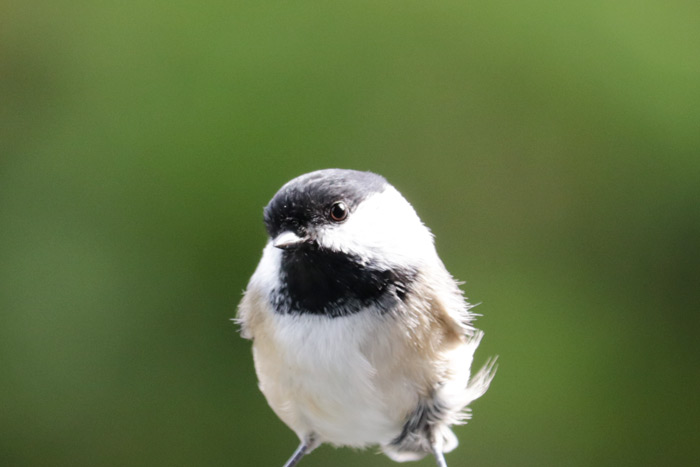
Northern populations of black-capped chickadees must withstand short days and very cold temperatures during winter. Under these conditions, individuals go into torpor. This lowers their body temperature at night and they enter regulated hypothermia, saving significant amounts of their energy. In addition, they have exceptional spatial memory to relocate stored food.
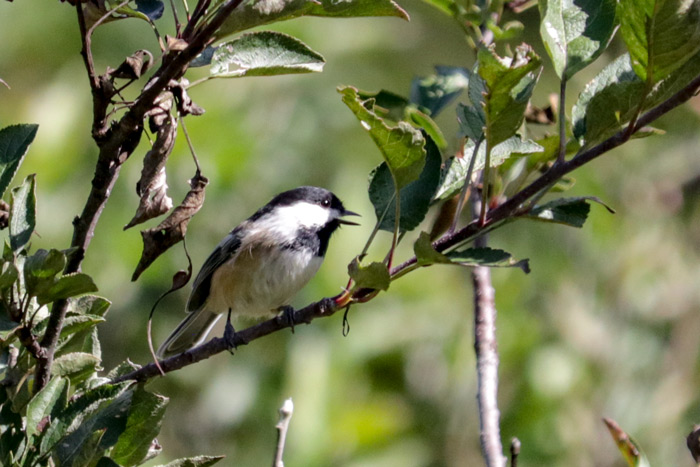
The voice of the black-capped chickadee is a clear chick-a-dee-dee-dee or dee-dee-dee. The song is a clear whistle, fee-bee-ee, or fee-bee and the first note is higher. Males will begin singing in mid-January and the song increases in frequency as winter progresses. Females may also sing occasionally. The contact call is a sharp chik or tsik, often leading into a chick-a-dee call. Chickadee nestlings make an explosive hiss and slap the inside of their nest cavities when an intruder is present.
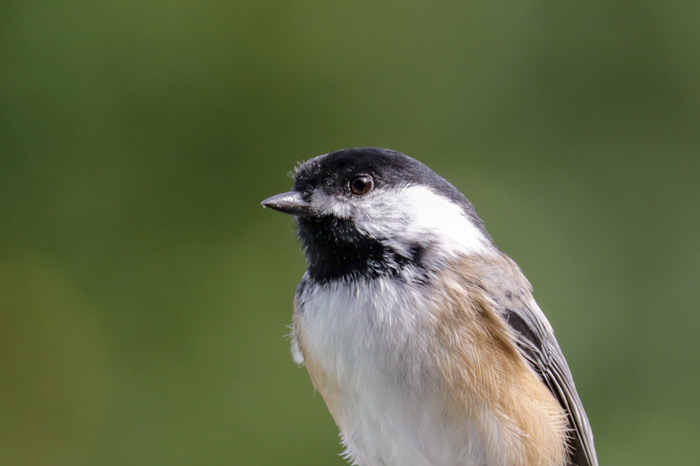
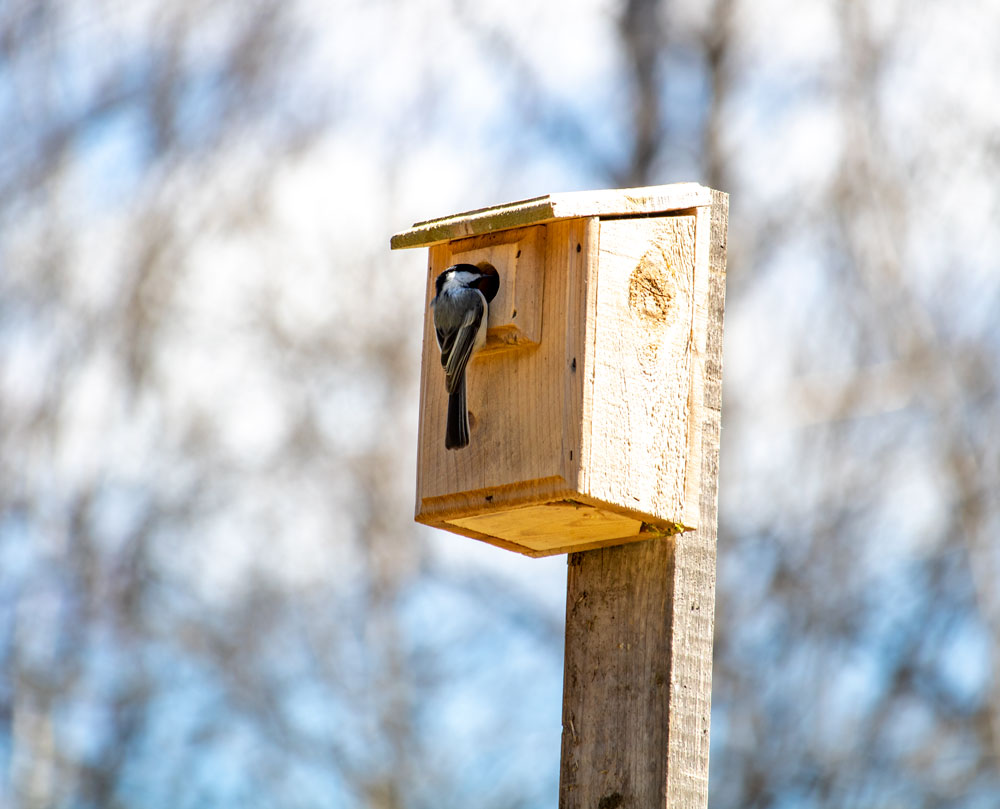
Black-capped chickadees are monogamous and will form long-term pair bonds. They are cavity-nesters and may use existing woodpecker cavities or other natural holes. Individuals can also supply nesting boxes for these birds. These birds will also excavate or enlarge their own cavities in rotten wood. Both sexes excavate, but only the female builds the nest. The female will start the foundation with moss and it is lined with soft hair. The female will incubates six to eight eggs for 12 to 13 days. The male brings the female food during this time. In the first few days after the young hatch, the female broods the young almost continuously. As the young grow, the female will join the male in providing food for the young. Fledglings leave the nest at about 16 days but stay in the breeding territory for another three to four weeks before heading off on their own. There is normally one brood per year.
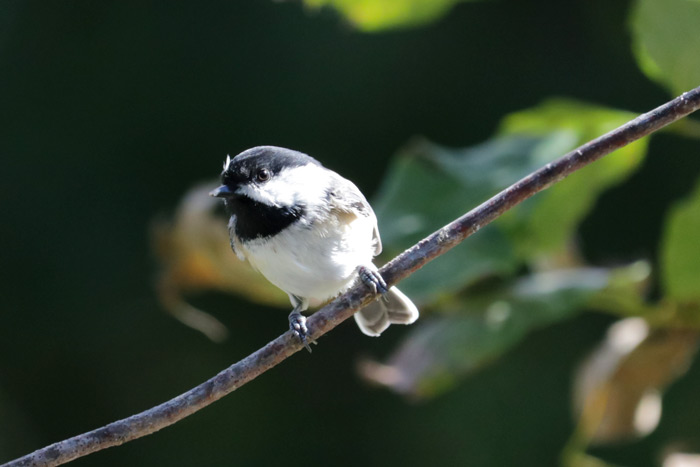
Black-capped chickadees are non-migratory. These birds live in pairs during the spring and summer. In the fall and winter, they will live in small flocks of six to ten individuals. These flocks are very territorial and will chase intruders away.
What do black-capped chickadees symbolize? Black-capped chickadees are considered to be a symbol of good luck. These birds are said to bring great luck, positivity, and happiness. Thank you for reading and the next time you see one of these cheerful birds, consider it a sign of good luck!
Resources used for this post:
allaboutbirds.org & audubon.org
Leave a Reply